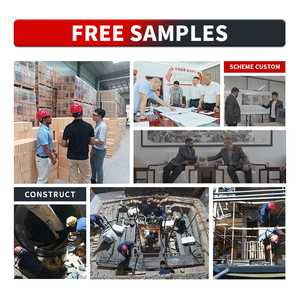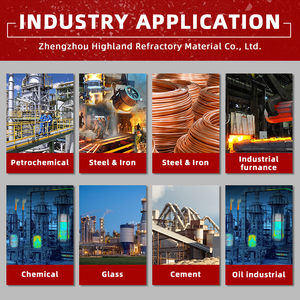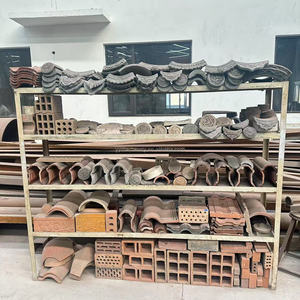
All categories
Featured selections
Trade Assurance
Buyer Central
Help Center
Get the app
Become a supplier

(1817 products available)


































A tunnel oven for clay brick is a type of oven used to bake clay bricks that have already been formed and dried. It is among the most essential components in brick-making.
Traditional tunnel ovens for clay bricks
These ovens are mostly used in developing countries where electricity and other advanced forms of energy are resources are not available. As the name suggests, traditional or earth-tunnel ovens utilize the earth as fuel. The design of these ovens is quite primitive, with the only distinguishing feature being an inclination of about 8 to 12 degrees to the ground.
They have chambers where clay bricks are laid out. On the other side, there are wells where the coal or wood used for fuel are placed. Air passes through the fuel tunnels, causing combustion and heat - which is then transferred to the clay bricks. Part of the clay bricks that are already baked provides enough energy to bake unbaked ones. Even though they are quite efficient and economical, they tend to produce unevenly baked bricks.
Modern tunnel ovens for clay bricks
Modern tunnel ovens are divided into three categories - the energy-efficient direct flue, the traditional flue, and the V-vent flue. All of them are quite energy-efficient. Most of them are top-fired, bottom-fired, or both. Modern tunnel ovens for clay bricks also have the advanced feature of being able to recycle heat. This means less energy is used per batch of bricks.
Unlike traditional tunnel ovens, modern versions are long horizontal tunnels with multiple firing zones. They also have a pre-drying and cooling zone. In the pre-drying zone, moisture is expelled from the brick by hot air that comes from overhead fans. The bricks move into the firing zone where heat is applied and finally into the cooling zone.
Because of the many zones, modern tunnel ovens produce a large amount of bricks per hour (up to 4000 bricks) and at a constant quality. The bricks are also produced quickly - within 12 to 36 hours. They are energy efficient, environmentally friendly, and produce very high-quality bricks. This is why they are used more often in industrial-scale brick-making.
For the best results, it's crucial to master the maintenance requirements of tunnel ovens for bricks.
Large-scale brick-making facilities:
Tunnel ovens are commonly utilized in industrial brick-making plants. These businesses produce clay bricks in significant quantities to meet the requirements of numerous construction and infrastructure projects. The consistent and big-volume brick-baking that these companies need is made possible by the tunnel oven's extended length.
High-demand brick markets:
Tunnel ovens are popular in regions with high demand for bricks due to booming construction activity. They offer an efficient and cost-effective production method to meet market needs. As such, minimizing production costs, maximizing output, and ensuring the profitability of brick-making operations.
Multi-shift production:
Because of its high output capacity, tunnel ovens are perfect for brick-making facilities that operate around the clock. These plants may be able to produce bricks at an astounding volume thanks to the continual feeding of raw materials into the tunnel oven and the consistent baking process it offers.
Automated production lines:
In brick-making facilities with fully automated production lines, tunnel ovens are frequently employed. These factories utilize contemporary automated technology to completely automate every step of the brick-making process, from material input to product output. The baking of bricks is included in this process, and tunnel ovens, with their consistent and sizable output, are a worthy match for automation.
Export-oriented brick-production:
For export markets looking for bricks, some brick-making factories have to adhere to international standards for product quality. Tunnel ovens are capable of producing bricks of uniform size, strength, and durability to meet export requirements. As such, ensuring compliance with international market demands and enhancing competitiveness in the global market.
When buying a tunnel oven for bricks, buyers should consider the following:
Production capacity and size:
They should check the size and production capacity of the oven. They should look for an oven with a capacity that is enough to meet their production demands for bricks. Buyers should also consider the dimensions of the oven to make sure the oven fits within their existing production facilities.
Brick types and technical requirements:
When buying a tunnel oven they should consider the different types of bricks. Buyers should look for an oven that will handle the type of brick they produce. Also, the oven must meet the company's technical requirements and standards.
Energy efficiency and consumption:
Consider the oven's energy use and efficiency to help reduce operating costs. Choose a model with high energy efficiency and low energy consumption. For example, an energy recycling system.
Automation and control system:
Consider the level of automation and the control system the oven has. Some tunnel ovens have an advanced computer control system for precise temperature control and monitoring. This can help improve product quality and production efficiency.
Installation and technical support:
Buyers should consider the installation and technical support services offered by the supplier. Ensure that the supplier can provide the necessary support and assistance during installation and use.
Q: What is the difference between a continuous and intermittent tunnel oven?
A: A continuous tunnel oven is more suitable for large output because it works all the time. An intermittent tunnel oven is an alternative, as it can produce intermittently, which is suitable for lesser production.
Q: What is the difference between an air circulation and radiation tunnel oven?
A: An air circulation tunnel oven is more suitable for giving even and constant quality to the products because it keeps on moving the heated air. An oven that uses radiation as the heat source is more suitable for fast cooking times.
Q: What is the heat-up time for a tunnel oven?
A: The heat-up time for a tunnel oven varies between one hour and up to twenty-four hours, depending on the design and construction of the oven.
Q: What is the difference between a refractory material and ceramic material used in tunnel ovens?
A: When bricks made of refractory material are used in tunnel ovens, they can resist high heat for a long periods. In contrast, ceramic materials are more suited for retaining and distributing heat evenly inside the oven.